Technology has made the COVID-19 pandemic bearable, as it allows many people to work, shop, visit relatives (virtually), and even go to school from the comfort (and importantly, safety) of their own homes. Yet, this Election Day, millions of Americans will travel to a physical polling location, use a Sharpie to mark their decision on a paper ballot and drop it into a scanning machine. Fifty-one years after landing humans on the moon and returning them home safely, we continue to use pen and paper to select our nation’s leaders. Why?
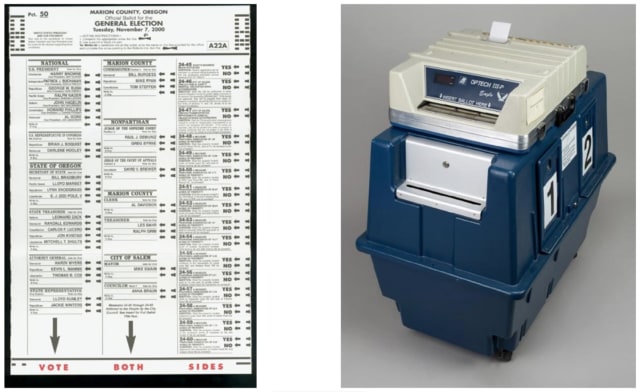
A Brief History of Voting Technology
In the nation’s early days, people voted via roll-call voice votes (small communities) or paper ballots tallied by hand. Throughout the year, companies developed various “secure” ballot boxes to prevent tampering, but like all security measures, unscrupulous politicians soon found ways to get around them.
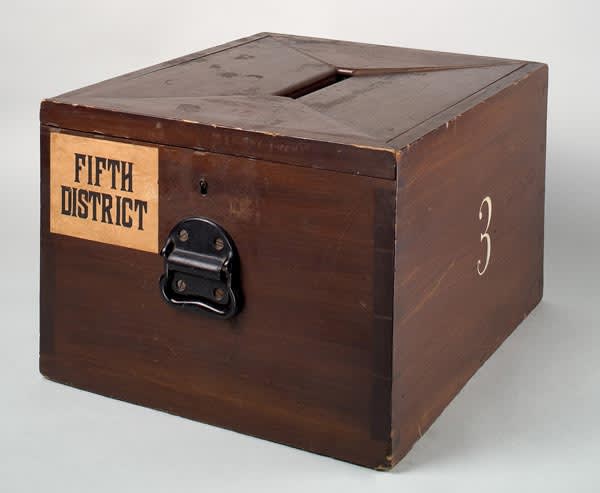
Throughout the 1800s, state election laws specified the physical characteristics of ballots, while political parties controlled the content. Ballots were sometimes confusing, and fraud was a possibility as some ballot boxes were pre-stuffed before election day or even designed to accommodate pre-stuffing, using false bottoms and sides. In those days, ballot boxes were separate; the voter placed the ballot into the box corresponding to their preferred candidate. It was easy to see who voted for which candidate by the box they voted with. Business owners sent spies to monitor how their employees voted and participated in voter intimidation.
Around 1880, Acme developed a voting machine with a mechanical counter that tallied the votes as voters placed them into the box. The new counter solved the pre-stuffing issue, but voter intimidation was still a problem. Eventually, states switched to voting booths and common ballot boxes to ensure voter privacy.

In the early 1900s, mechanical gear-and-lever voting machines with automated counters began to appear. They became popular in the 1920s when women got the right to vote and effectively doubled the number of potential voters. Some states also used punch-card ballots with automated tabulators.
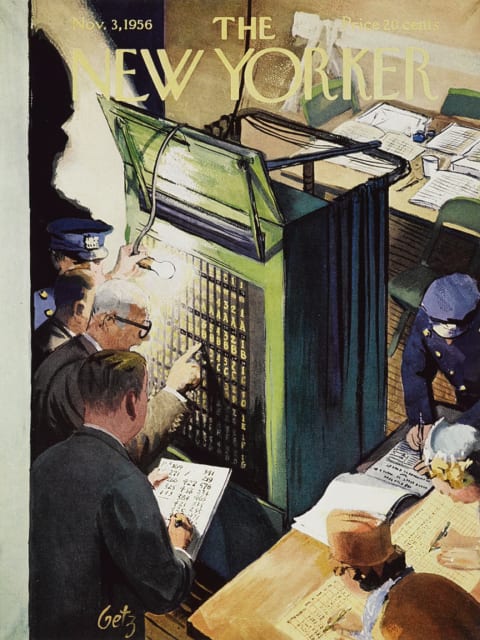
It wasn’t until the early 1960s that electronic computers entered the election scene, using punch-card ballots similar to those used in early computer programming. The system appeared to work well for decades, except for the infamous “hanging chads” of the 2000 election.
Today’s Election Technology
Most of us, whether voting by mail or in person, use hand-marked paper ballots. These are usually read by optical scanners and tabulated on local computers, with the state retaining physical ballots in case a manual recount becomes necessary. But there are other hi-tech ways to vote, which some districts have adopted.
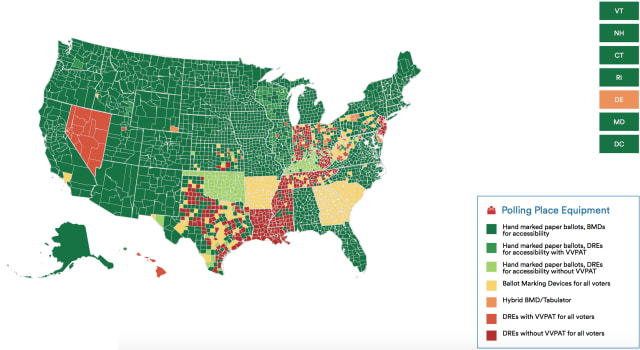
A ballot marking device (BMD) allows voters to use a touchscreen. It then prints a completed paper ballot based on the voter’s choices. The device was originally intended for people with disabilities as part of the 2002 Help America Vote Act, but, in some districts, it’s now the primary means of voting for the general public. A direct-recording electronic (DRE) voting machine also enables voters to use a touchscreen, with each vote stored into the computer’s memory. In many cases, a Voter Verified Paper Audit Trail (VVPAT) provides a backup.
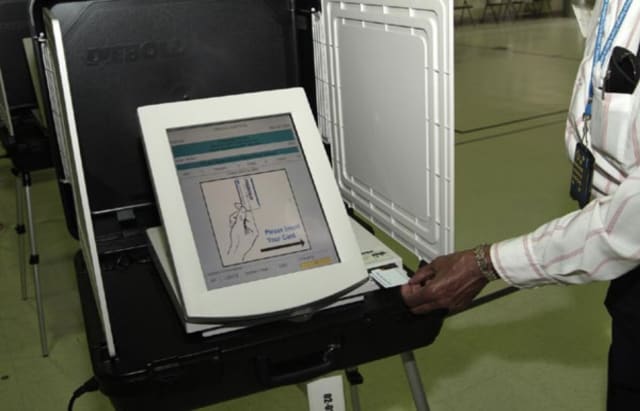
Why do the states and districts have such a variety of voting technologies and procedures rather than the entire country using a standard, centralized, and secure voting system? It may seem counterintuitive, but many experts agree that diversity among voting technologies makes the system more secure. A central system gives hackers one thing to focus on; a disparate system forces them to fight a war on many fronts, as it were.
How Easily Can Elections Be Hacked?
Electronic voting with a paper trail sounds convenient and secure, right? Think again.
In 2006, researchers from Stanford University conducted a security analysis of the widely-used AccuVote DRE machines. They determined that it’s easy for anyone with physical access to the mechanism to add malware that skews the election results. Poll workers, in particular, often have unsupervised access to them. It took researchers less than a minute to infect a sample machine with malware. They concluded that they could solve the security issues by improved software and hardware, but whenever someone builds a better lock, someone else figures out how to pick it.
And while one might assume that a central, highly protected system provided and maintained by the federal government would offer nearly impenetrable security, one would be wrong. Within the past year, fifty-two hackers were able to bypass the U.S. Army servers. Fortunately, the hackers weren’t malicious — they were part of the Army’s efforts to find security holes by employing “benevolent hackers.” The result: in less than five weeks the hackers penetrated the state-of-the-art hardware and software responsible for national security.
Given the recent occurrences of identity theft, compromised databases, and other forms of hacking, don’t expect Internet-based voting any time soon.
The U.S. Election Assistance Commission (EAC), an independent, bipartisan commission that serves as a national clearinghouse of election information as well as accredits testing laboratories, and certifies voting systems, produced this video showing the technology behind fair elections:
Is Technology the Solution to Election Fraud?
The U.S. Department of Justice (DOJ) refers to election fraud as something that “usually involves corruption of one of three processes: the obtaining and marking of ballots, the counting, and certification of election results or the registration of voters.” (Note that the DOJ uses the term election fraud, not voter fraud.) Let’s look for places where fraud can occur during registration and polls.
The National Conference of State Legislatures describes the voter registration process, explaining that whether one registers in-person or online, the government cross-references their information with records from the state’s motor vehicle department and other agencies. If everything checks out, it is then when they add the voter’s name to the registry. The individual must then provide a signature in-person or use the signature in the state’s database (obtained from one of the official identification documents) when registering online.
When voting in-person, some states require the voter to show a picture ID while others do not. In either case, however, the voter must sign a form indicating that they’ve voted; the election official compares that signature with the one on file to verify the person’s identity. When voting by mail or with remote-drop ballot boxes, the voter must sign the mail-in ballot. An official verifies the signature before they tabulate the vote. Either way, there’s a record that the person voted. A mail-in ballot won’t be counted if the person has already voted.
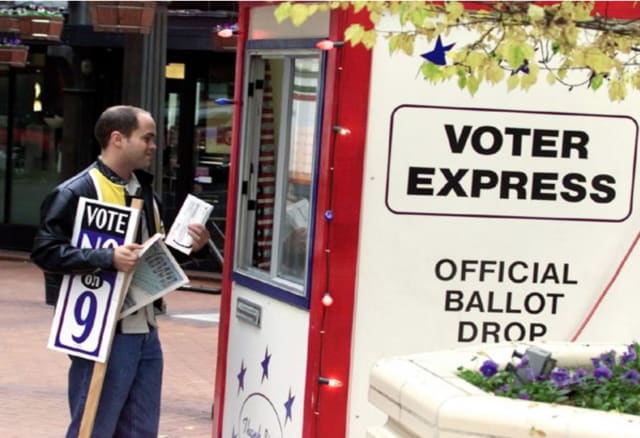
Signatures can be forged, so what about verifying identities through facial recognition technology? If an average smartphone can recognize my face, why can’t the polling places incorporate that technology? In short, it’s not good enough … yet. According to a National Institute of Standards and Technology (NIST) report on facial recognition, the technology’s accuracy is higher than 99 percent. However, that varies with ethnicity and sex. Identification of young, light-skinned males is the most accurate and dark skinned women the least accurate. Therefore, the latest technology defers to humans confirming signatures and photo IDs (where required).
Perhaps we should ask whether election fraud is a predicament. Knowing that this has become a partisan issue, we’ll address both sides. The Heritage Foundation cites court records shows 1,298 examples of voter fraud over a thirty-six-year span between 1982 and 2018 – an average of 36 cases per year. Their report claims that the list “only a sampling” but provides no additional evidence. The Brennan Center counters that with numerous published research papers, federal and state court rulings, and even a report by the nonpartisan Government Accountability Office, and concluded that voter fraud is so rare that it’s unlikely to skew election results.
The Right Tool for the Job
Years ago, I was talking to a librarian about media technology. I was surprised to learn that in the digital age, microfilm is still widely used. She explained that while digital is more convenient for research purposes, a library’s role also includes archiving information. Digital media formats continually change, and if one doesn’t have the technology to read the media, it’s worthless. She added, “worst-case scenario, you can read microfilm with a light source and a magnifying glass; try that with a CD-ROM.”
When it comes to elections, officials can tabulate human-readable paper ballots manually, if necessary. Sometimes the right tool for the job is also the simplest technology.
Source: engineering










